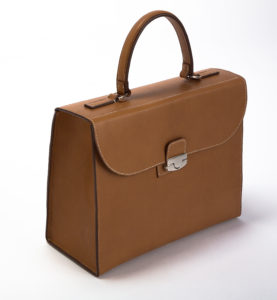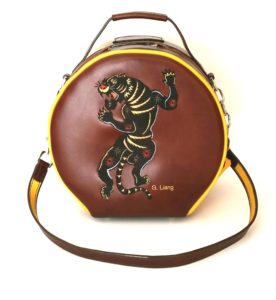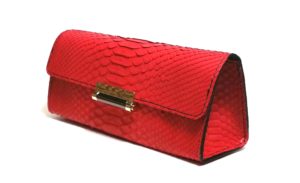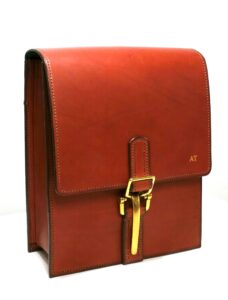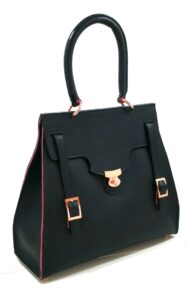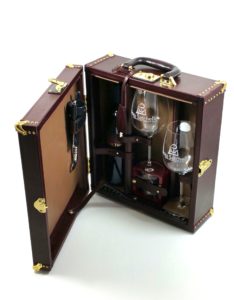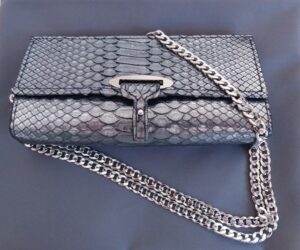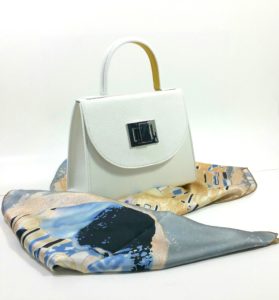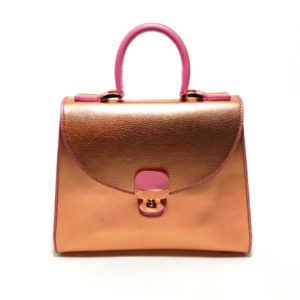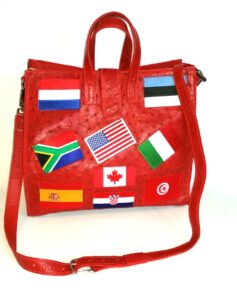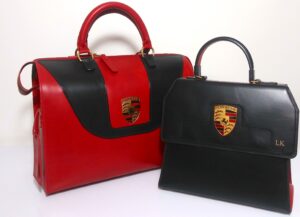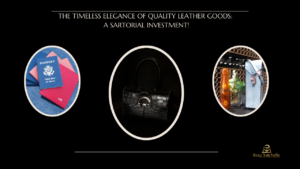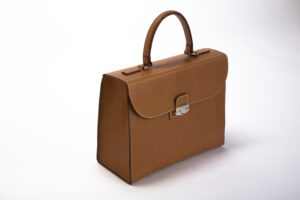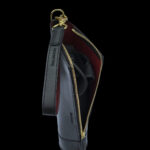The art of hand-stitching leather in the United States has exploded in the last few decades, as artisans take a renewed interest in learning how to create leather products either as a hobby or for some, an eventual business. This beautiful European art form is quite nuanced; yet, even a neophyte can differentiate the level of mastery when eyeing a completed leather hand-stitched product.
Saddle stitching is the technique used to sew leather and prior to the industrial revolution, was the only way leather goods (especially coats and boots for winter climates) were manufactured. Most people recognize similar stitching techniques used on a baseball (named a baseball stitch) or in luxury cars with leather-wrapped steering wheels (a specialized technique called cross stitching).
The invention of sewing machines was responsible for the decline of leather hand-stitching, except among traditional artisan ateliers and houses who still thrive in Europe. Sewing machines allowed for the ability to mass-produce hundreds of pieces of clothing in a short time span as opposed to the many hours or days it takes to stitch one leather item. Yet, the difference in the two types of stitching, saddle stitching will always be superior when sewn properly. Unlike machine stitching which loops top and bottom threads to join the materials together (one clue is, if one stitch is cut, the other stitches will began to unravel), saddle stitching is the process of two needles criss-crossing through each hole with the thread completely passing through the same hole and each stitch remains independent of each other, even if cut.
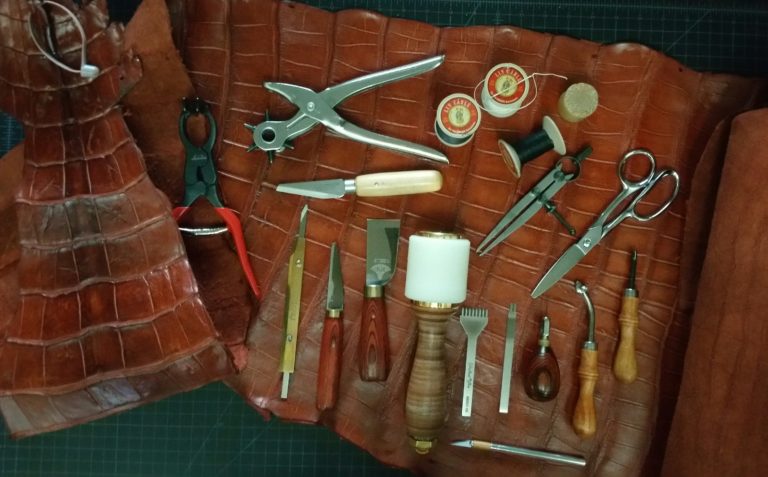
What Tools are Needed For Hand Stitching leather
In addition to the actual hide of leather, an artisan’s repertoire of tools will include:
– Pricking Irons – Used to prick uniform holes for marking the place for the awl to penetrate the leather. An artisan will accumulate different irons with various numbered holes (10,8,6,4,3,2 and 1) for different distances. Keep in mind, usually, the closer the holes, the smaller the accessory and thinner the thread; thus, the more precise the stitches will look on a luxury product. Pricking holes takes a great deal of training to ensure the stitches are straight.
– Stitching needles – Come in various sizes and are usually larger than typical sewing needles. The tip is slightly blunt since it is not needed to pierce holes in the leather which will be done with the pricking iron and awl.
– Waxed thread – The coating of wax on the thread allows it to slide through the holes easier and provides certain protection of the thread from moisture. The types of thread can impact the outcome of a finished product. Man-made nylon and polyester thread can be burned lightly to seal the ends. On the other hand, natural linen thread has to be pulled intact through the holes to seal the thread in place because it doesn’t burn. A beeswax block is used to coat the thread to ensure an easier pull through the holes of the leather. Beau Satchelle typical uses variations of French threads depending on the project.
– Stitching pony – Either a floor or table T-shaped wooden clamp built to hold leather during the stitching process; usually the jaws are covered with leather to protect the leather being stitched. Some master crafters prefer not to use a stitching pony, yet, for most artisans, it provides control and protects the leather from excessive handling during the stitching process.

A master artisan will learn his or her own stitching rhythms with regards to how much tension can be placed on the thread so the stitches can be perfectly lined up and ultimately crease the leather. If the stitches are too tight, you will notice that the leather doesn’t lay flat.
Depending on the type of leather, skins have to be handled differently. For instance dyed kidskin leather is very supple for needles to pass through rather easily. Suede, on the other hand, is extremely pliable and stitching requires a much lighter touch. Beautiful bridle cow leather is more rigid and durable enough to be handled somewhat rougher without altering the leather. Tougher hard shell skins, like eel skin, take very strong hands (sometimes a pair of pliers) to push the needle and thread through.
One other element in which determines a higher end hand-stitched leather product is edging. It’s not stitching but is very important in an artisan’s arsenal. If you pay close attention to a handcrafted luxury leather piece, you will notice the edges where the sides are sewn together are very smooth and look like the leather has melted together. To get the edges to look seamless, tools such as sandpaper and either a handheld wood slicker or an electric edge burnisher are used. The colors of the edges, depending on the creative eye of the designer, can either be edged with beeswax for a natural look or a select color to contrast or match the leather or the thread.
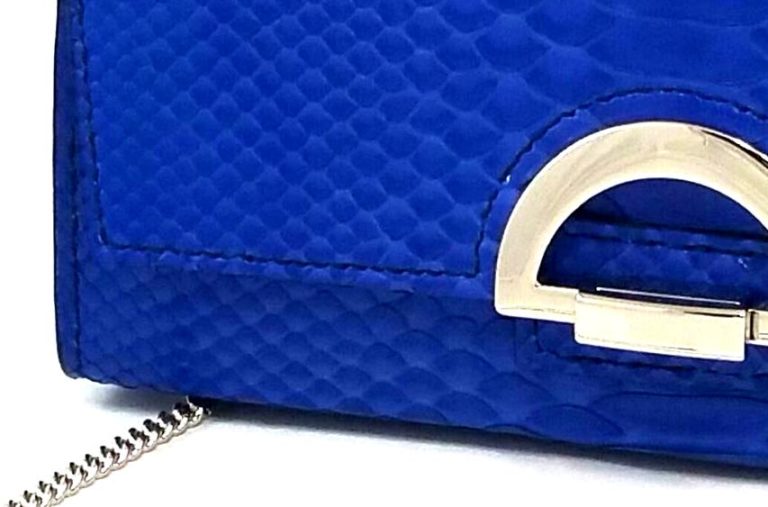
When learning any craft, the prevailing advice given is, it takes ten thousand hours to become a master; However, we feel during those ten thousand hours, perfecting your craft and not just going through the motions is imperative to become a true master.
These levels of mastery for a leather craftsperson are only accomplished by the artisan’s hands where no machine assistance is used. Examples include hand cutting the leather without a clicker (a machine with dies to cut leather shapes); skiving (a process of thinning the leather) the edges with a skiving knife; and hand painting and hand burnishing the edges with a hand slicker. And most of all, using a tool called an awl which is the proper way to hand-stitch. When a pricking iron is used on the front side of the leather to be stitched, the awl penetrates the second layer or all layers of leather to finish the hole on the opposite side. This technique elevates the level of mastery as seen through the final stitching on the backside.
A Master Artisan using a clicker, skiving machine, and a heating tool to smooth edges is merely taking shortcuts and allows more precision and a detailed finished product; plus, cuts down on time. But, in starting a leather-craft journey, using these tools will alter the ability to perform when machines are not available and exposing a lack of skills in the world of craftsmanship.
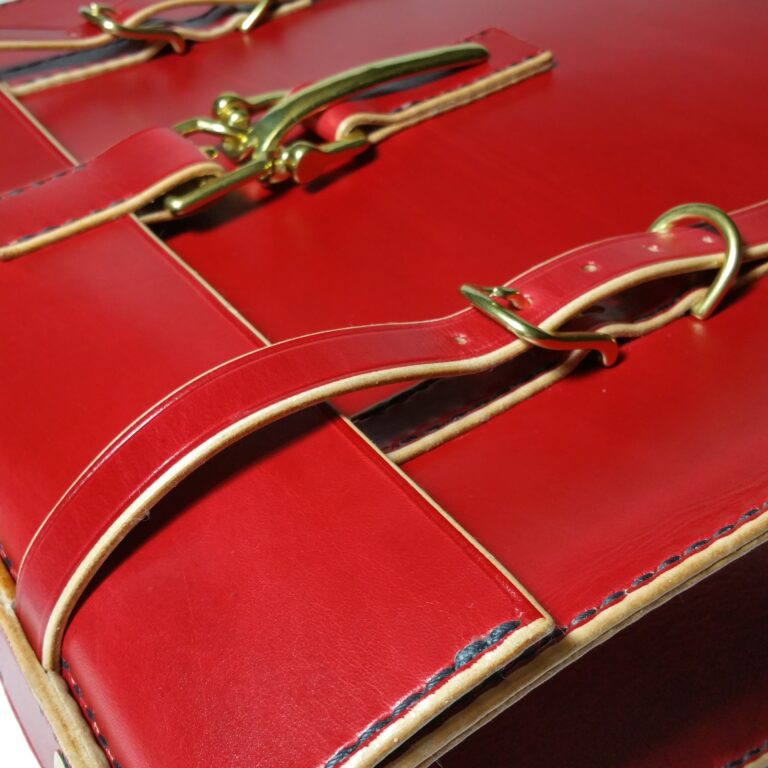
A Master Artisan’s skill level is so specialized that most reactions are of disbelief in viewing luxury goods stitched by hand. These admiring comments are both humbling and confirming to our designer T. Michael’s skill level and what drives his passion to create unique and beautiful works of art.
Beau Satchelle recently built a personalized travel bag for a high-end vintage car silent auction to benefit a community charity. We are excited to participate and look forward to presenting a work of hand stitched art that one fortunate car owner will cherish a lifetime. Look for its reveal on our blog within a few weeks. – AJ
Hat Tip to Pixabay Photographer for use of their work
SHARE POST
Customer Favorites
